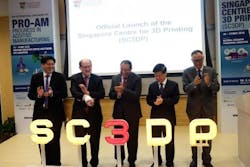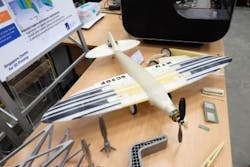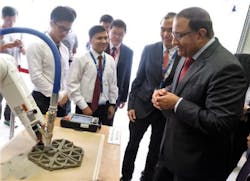NTU Singapore launches 3D printing research center
Nanyang Technological University (NTU Singapore) has launched a new research center that will develop innovative solutions in 3D printing. 3D printing—also known as additive manufacturing—has been identified as an essential enabler in the advanced manufacturing and engineering technology domain under the Research, Innovation and Enterprise (RIE) 2020 Plan.
Additive manufacturing—which is expected to grow to $21 billion globally by 2020—is one of the cross-cutting technologies that support Singapore's key industry sectors, including aerospace and defense, marine and offshore, and building and construction.
NTU Professor Chua Chee Kai, one of the world's most-cited scientists in 3D printing, will lead the Singapore Centre for 3D Printing as the executive director. The center is funded by the National Research Foundation (NRF) Singapore under its Medium-Sized Centre Grant at a funding of S$42 million ($30.5 million) over 10 years. The grant seeks to consolidate research activities across departments, faculties, and universities to create a critical mass of leading researchers in strategic research areas for Singapore.During the center's launch, NTU chief of staff and VP of research Prof. Lam Khin Yong signed four new research collaboration agreements with ST Engineering, Keppel Offshore & Marine Technology Centre (KOMtech), Sembcorp Design and Construction, and automation provider Emerson Process Management. The partnership with Emerson Process Management will see the creation of a joint laboratory and an additive manufacturing center at their Singapore facility. There will be two joint research projects focused on using 3D printing methods to design and produce complex engineering parts.
Scientists at the NTU center are working on several new developments in construction, including a new way to 3D-print customized concrete structures for buildings, such as rooms, beams, and pillars. This process is expected to be more cost-effective and environmentally friendly than current casting methods, as concrete parts in multiple shapes and sizes can be 3D-printed by uploading the design blueprints onto a 3D printer. Wet concrete is then printed out layer by layer to form the desired items. The operator can move on to another design without the need to construct costly individual molds.Another research project at the new center is to automate the production of a fiber-reinforced construction material, where concrete is sprayed into a surface with supporting wire mesh. The new process will allow for new advanced materials to be combined with concrete to make stronger walls.
As part of the center's launch, NTU is hosting the 2nd International Conference on Progress in Additive Manufacturing. The three-day conference, taking place May 16-19, 2016, will see more than 150 researchers and commercial market leaders from all over the world share their latest breakthroughs in additive manufacturing.
For more information, please visit http://sc3dp.ntu.edu.sg.


